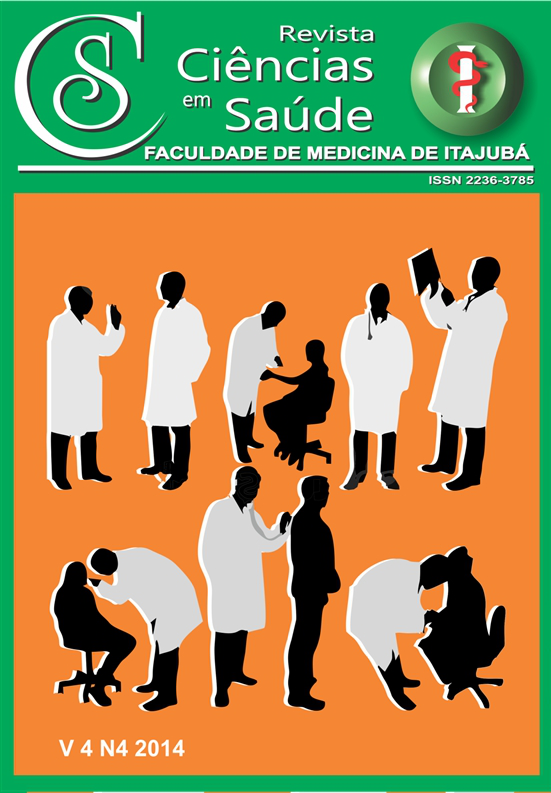Efeitos do Tratamento Crônico com Celecoxibe ou Indometacina na Função Renal de Ratos Submetidos a um Modelo Experimental de Doença Renal Crônica/ Effects of Chronic Treatment with Celecoxib or Indomethacin on Renal Function in Rats Subjected to an Experi
Main Article Content
Abstract
Objetivo: avaliar os efeitos do tratamento crônico com Celecoxibe e Indometacina sobre a função renal de ratos. Materiais e Métodos: Os ratos foram submetidos a um modelo experimental de doença renal crônica moderada (nefrectomia ¾), randomizados em três grupos, alocados em gaiolas metabólicas individuais e receberam administrações distintas durante quatorze dias por gavagem: 1- Água destilada, 2- Celecoxibe 200mg/Kg e 3- Indometacina 5mg/Kg. Foram avaliados diariamente parâmetros como peso, ingesta hídrica, alimentar, débito urinário e ao final do experimento, foram coletadas amostras de urina e sangue para dosagens de ureia, creatinina sérica e urinária, glicemia e clearance de creatinina. Resultados: Apesar de não haver diferença significativa no clearance de creatinina entre os grupos, a maior mortalidade no grupo indometacina pode evidenciar que seus efeitos adversos na função renal são mais importantes se comparados aos do celecoxibe. Conclusão: O celecoxibe demostrou, sob as condições experimentais utilizadas, ser seguro em ratos submetidos à doença renal crônica moderada. Observou-se aumento significativo na mortalidade do grupo Indometacina.
Palavras-chave: celecoxibe, indometacina, doença renal.
ABSTRACT
Objectives: to evaluate the effect of chronic treatment with Celecoxib and indomethacin on renal function in rats. Methodology: The rats were subjected to an experimental model of moderate chronic kidney disease ( ¾ nephrectomy ) were randomized into three groups allocated in individual metabolic cages and received separate administrations during fourteen days by gavage : 1- Distilled water, 2- Celecoxib 200mg/Kg and 3- Indomethacin 5mg/Kg . Parameters such as body weight, water intake, food , urine , and urine output was evaluated at the end of the experiment , blood and urine samples were collected for serum urea , serum and urinary creatinine, glucose and creatinine clearance were assessed daily . Results: Although there was no significant difference in creatinine clearance between the groups, the higher mortality in the indomethacin group can demonstrate that their adverse effects on renal function are more important if compared to celecoxib. Conclusion: Celecoxib demonstrated, under the experimental conditions used, to be safe in rats with moderate chronic kidney disease. There was a significant increase in mortality Indomethacin Group.
Keywords: celecoxib, indomethacin, renal disease.
Article Details
Authors maintain copyright and grant the HSJ the right to first publication. From 2024, the publications wiil be licensed under Attribution 4.0 International 
 , allowing their sharing, recognizing the authorship and initial publication in this journal.
, allowing their sharing, recognizing the authorship and initial publication in this journal.
Authors are authorized to assume additional contracts separately for the non-exclusive distribution of the version of the work published in this journal (e.g., publishing in an institutional repository or as a book chapter), with acknowledgment of authorship and initial publication in this journal.
Authors are encouraged to publish and distribute their work online (e.g., in institutional repositories or on their personal page) at any point after the editorial process.
Also, the AUTHOR is informed and consents that the HSJ can incorporate his article into existing or future scientific databases and indexers, under the conditions defined by the latter at all times, which will involve, at least, the possibility that the holders of these databases can perform the following actions on the article.
